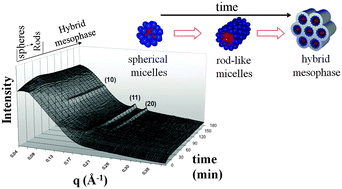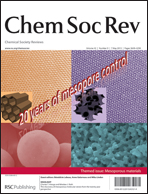In this review, recent progress in the understanding of the formation of various silica mesoporous materials is reported. Owing to time-resolved experiments using Small Angle X-ray or Neutron Scattering (SAXS or SANS), it is possible to follow in situ the formation of a material during its synthesis via the Cooperative Templating Mechanism (CTM). Such experiments directly provide unique information about the structural properties of the material inside the synthesis solution. One of the main findings is that phase transformations often occur in the material prior to the stabilisation of its final structure. Moreover, during the very early stages of the synthesis, it is also possible to detect the first hybrid silica–surfactant micellar aggregates, prior to the precipitation of the material, as reported in the case of the SBA-15 materials. All these experiments allow a better understanding of the formation mechanisms and of the influence of the many synthesis parameters. These results open the way to a better prediction and control of the structure of mesoporous materials.

You have access to this article
 Please wait while we load your content...
Something went wrong. Try again?
Please wait while we load your content...
Something went wrong. Try again?


 Please wait while we load your content...
Please wait while we load your content...